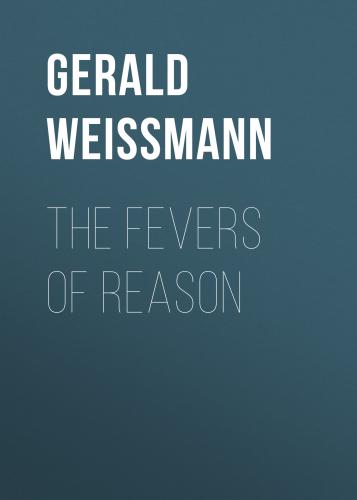The Fevers of Reason. Gerald Weissmann
1. Arrowsmith and CRISPR at the Marine Biological Laboratory
2. Ebola and the Cabinet of Dr. Proust
3. Zika, Kale, and Calligraphy: Ricky Jay and Matthias Buchinger
4. Ike on Orlando: “Every Gun Is a Theft”
6. Lupus and the Course of Empire
8. Apply Directly to Forehead: Holmes, Zola, and Hennapecia
9. Swift-Boating Darwin: Alternative and Complementary Science
10. Spinal Irritation and the Failure of Nerve
12. Dr. Doyle and the Case of the Guilty Gene
13. Swift-Boating “America the Beautiful”: Katharine Lee Bates and a Boston Marriage
14. Alice James and Rheumatic Gout
15. Free Radicals Can Kill You: Lavoisier and the Oxygen Revolution
16. Dr. Blackwell Returns from London
18. Welcome to America: Einstein’s Letter to the Dean
19. Modernism and the Hippocampus: Kandel’s Vienna
20. A Taste of the Oyster: Jan Vilcek’s Love and Science
21. Richard Dawkins Lights a Brief Candle in the Dark
22. Eugenics and the Immigrant: Rosalyn Yalow
23. Cortisone and the Burning Cross
24. Lewis Thomas and the Two Cultures
Ideas and products and messages and behaviors spread just like viruses do.
—Malcolm Gladwell, The Tipping Point (2000)
NOT ONLY LOVE, as the Bard tells us, or youth, as the Duke suggests, produces fevers of reason. We’ve learned that the fevers of Zika and Ebola can sear the mind; we’ve also learned that reason becomes toast when presidential Tweets go viral at dawn. Fevers of reason require treatment based on facts not fancy, brains not bravado.
Happily enough, messages of cool reason can also go viral, and at their best, inform and command. That’s especially true of scientific papers that introduce notions like the helical structure of DNA. To become viable, and go viral in turn, their progeny must survive the birth pangs of test, retest, and peer review. When a tested notion reaches adolescence, we call it a hypothesis (DNA makes RNA makes protein). When a hypothesis reaches maturity it becomes a theory (relativity) and, with time, becomes a law (gravity).
No such direct path for an essay. While the word comes from the French essai, a “test, trial, or experiment,” essays don’t require independent proof. The essay form may have been set by Montaigne’s musing from the terrace of his château, but those boundless vistas are long gone. Essays today, mine included, are written in the realm of a viral Internet, where imaginary gardens of fancy have yielded to a thicket of facts and “alternative facts” through which reason is the surest guide.
In the first four sections of this book, the essays deal with four themes to which I’ve returned over the years. “Going Viral” connects a 2016 Woods Hole lecture on gene splicing to a fictional discovery made in Sinclair Lewis’s 1925 novel Arrowsmith: a virus that cures the plague. We also find a link between the Ebola epidemic in West Africa and gun violence in the United States, both of which have gone viral. We trace Zika virus and the drug thalidomide to fetal abnormalities, forms of which have not deterred their victims from fame or infamy. Figuring out how viruses turned purple petunias white led to a Nobel prize and an inscription on a monument on Columbus Avenue in New York City, while a disease of British royalty (lupus) directly affected the history of health care in the United States.
“Science Fictions” lays out histories of the age-long contest between experimental reason and febrile beliefs such as “animal magnetism,” “homeopathy,” “distant healing,” and “intelligent design.” We meet Dr. Oliver Wendell Holmes and Anton Mesmer, Edgar Allan Poe and Dr. Arthur Conan Doyle. We conclude that truth is no stranger to fiction.
In “Two for the Road,” we remember lifelong partnerships between two people, married or not, unions that have given us oxygen (the Lavoisiers), radium (the Curies), women in medicine (the Blackwells), “America the Beautiful” and the New Deal (Bates and Comans), and the neatest prose written by a member of the James family (Alice James and her Katharine).
The fourth section, “Beside the Golden Door,” considers contributions made to American science by immigrants who passed by that Lady lifting her lamp. I write about Albert Einstein and Currier McEwen, then dean of the NYU Medical School, and about Richard Dawkins, who returned to Oxford from the United States with a Gene McCarthy sticker on his Ford. I contrast the experiences of scientists like Jan Vilcek and Roslyn Yalow, who became Americans to escape racial prejudice in Europe, with that of Percy Julian, a black American scientist who learned chemistry in Vienna and
